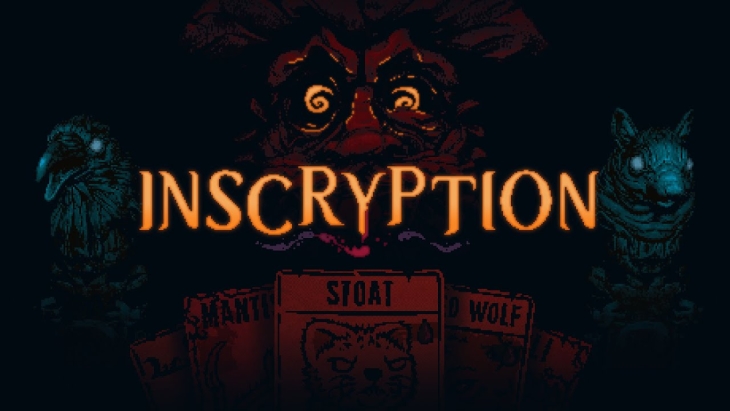
Inscyption is a new deck-building and, at times, disturbing psychological horror game developed by Daniel Mullins Games. Published by Devolver Digital, it blends together a number of different genres; taking the player on a unique, unexpectedly dark adventure.
Does Inscryption deal the proper deck for a great game or, does it belong in an old storage unit next to some Magic cards?
Inscryption
Developer: Daniel Mullins Games
Publisher: Devolver Digital
Platforms: Windows PC (reviewed), Linux, Mac
Release Date: October 19th, 2021
Players: 1
Price: $19.99 USD
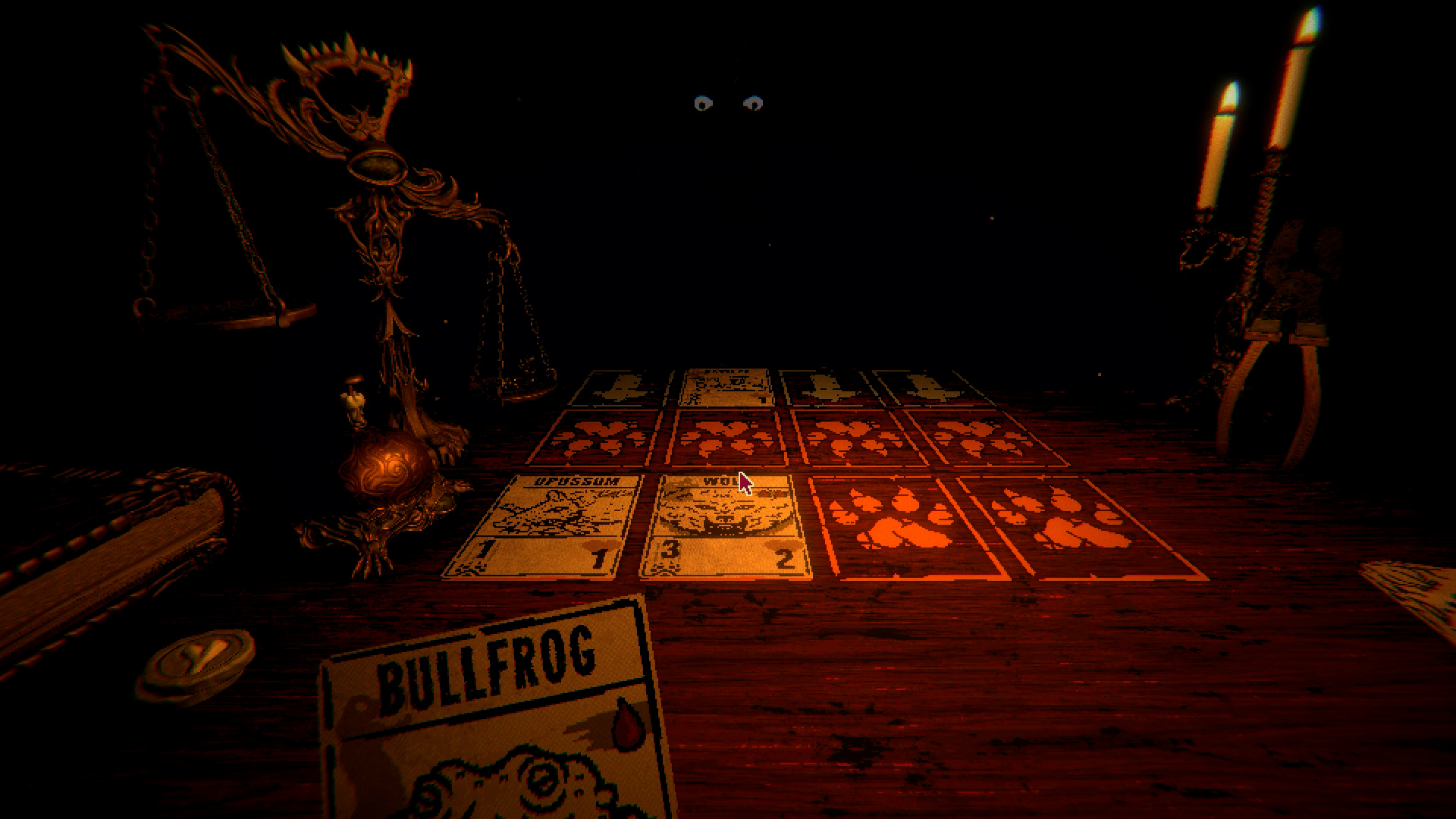
I admit I was apprehensive over yet another card game with excessive card effects and mechanics. In a very short span of time however, I realized I wasn’t just reading to get through it. I found myself intrigued.
It’s not just about playing with these cards, there’s more to the story here. Why am I in this cabin in the first place? Why can’t I see the face of the thing across the table? I can only see those creepy eyes.
Most games have the story clearly explained in some long-opening spectacular cinematic video. In Inscryption, it’s not. That’s one of the things that make it interesting. Everything is not laid out for you. One minute you’re working on building your playing deck, and the next you’re watching some real-world video footage of a guy finding a buried floppy disk in the woods… Titled “Insrcyption.”
It’s a compelling formula that keeps the player constantly craving to find out more, to uncover more of the mystery of just what Inscryption is. That being said, I expected this story to be fairly short.
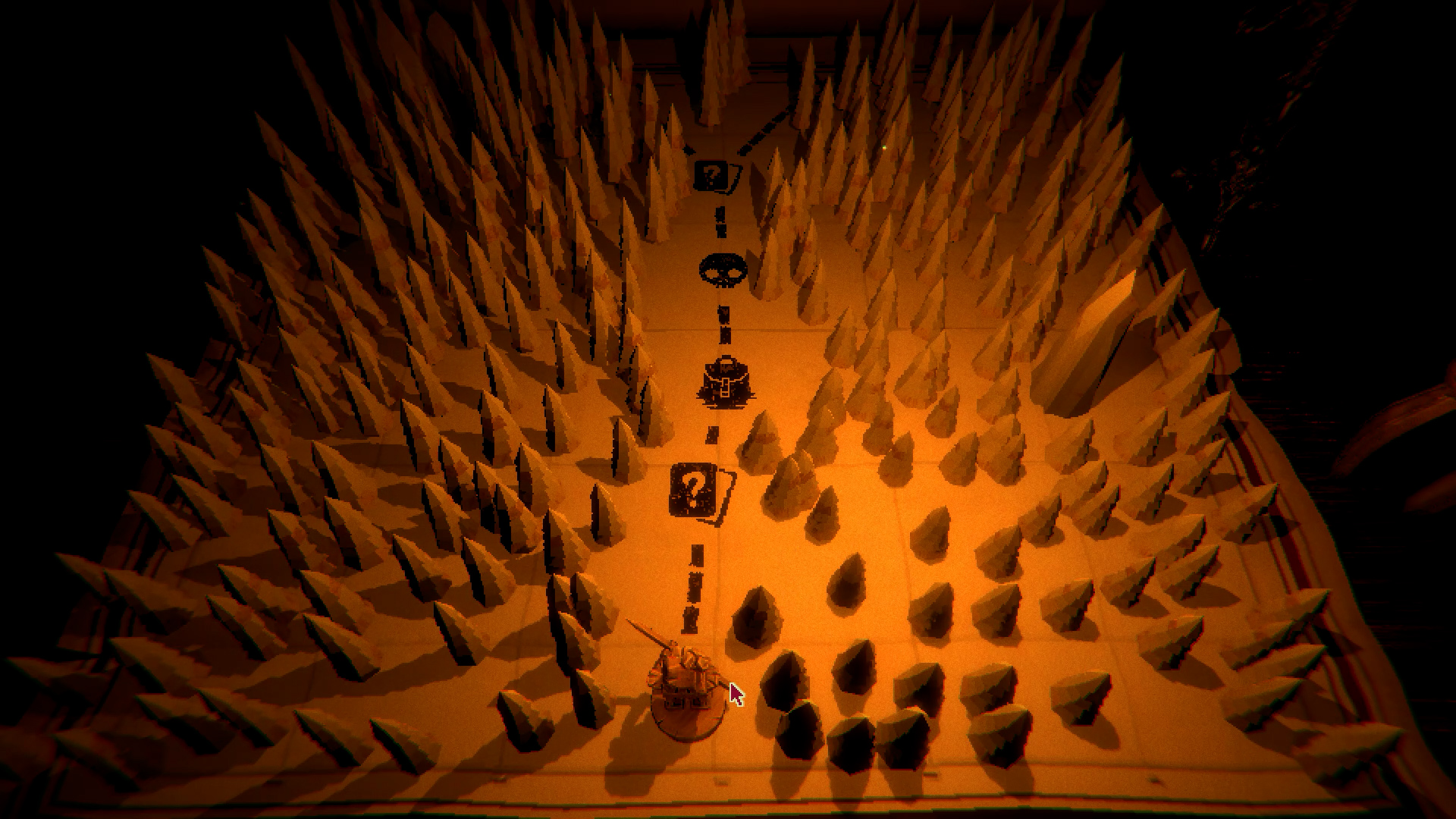
Avoiding spoilers, I found myself surprised. I guessed fairly quickly that the end game was reached once I beat the creepy guy across the table from me, and that wasn’t the case at all. There was so much more.
Story aside, the gameplay keeps things fun. Inscryption is designed to easily let the player view the rules and the abilities of a particular card you’re either holding or going against. There’s no need to pause the game, find some “Journal” or rule section, and then explore that to find out how your card plays.
What the player is ultimately trying to do is build an adequate deck of cards to beat multiple-stage bosses. The strategy is to either defeat or outmaneuver the opposing cards (with varied attack and defense capabilities) and deal damage directly to the opponent; reflected on a scales.
When the scale dips too far from accumulated damage, that person loses. Eventually, they’ll reach the final showdown with the “Main” Boss. If you lose, your built deck will disappear, and you’ll head all the way back to the beginning to start again.
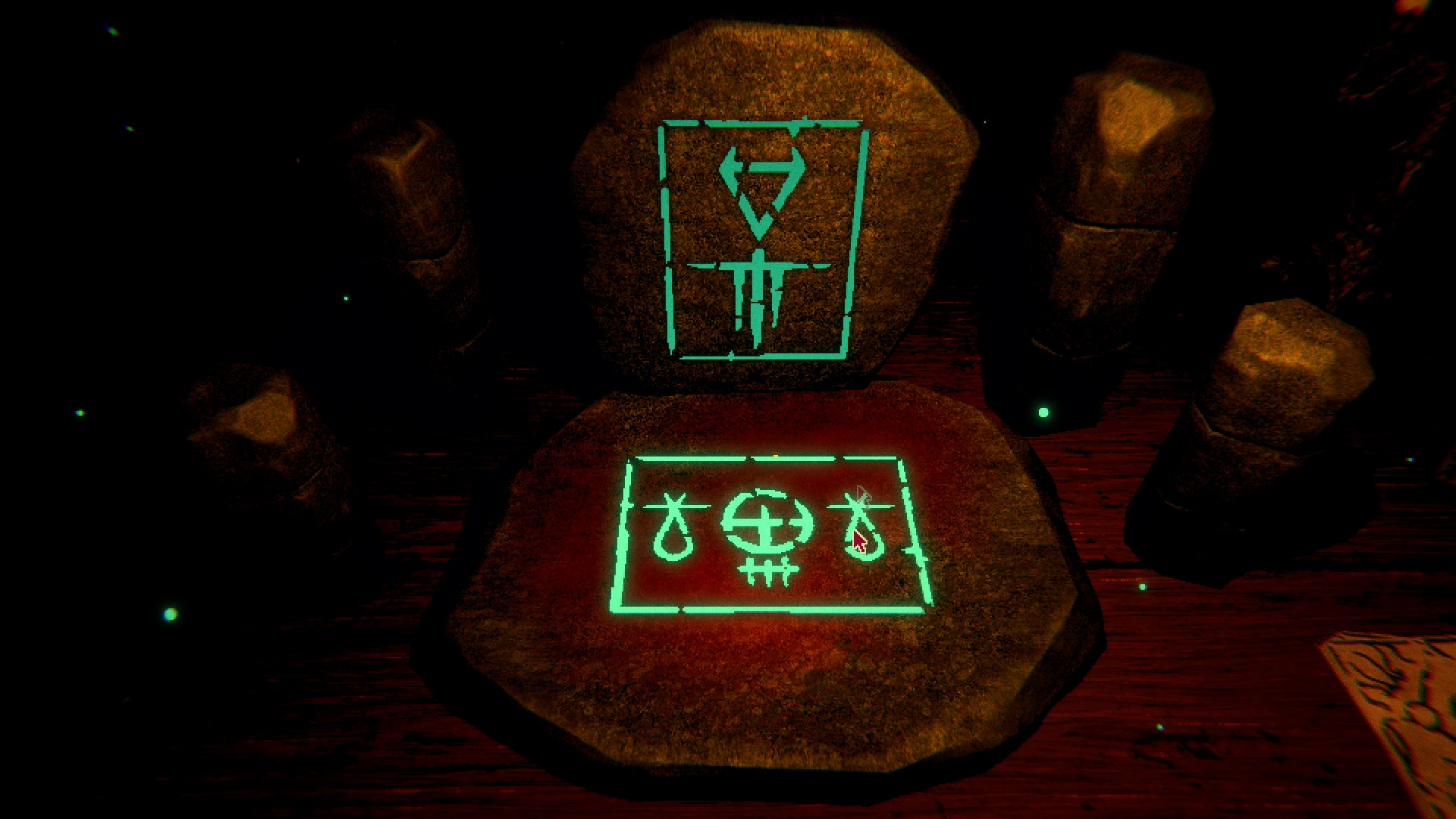
The really great thing about the game is that it gives you multiple paths to choose from to reach each stage boss. Depending on the path you pick, you’ll come across different upgrade stations.
These areas will allow you to modify different abilities on your cards, sacrifice certain cards to buff others, or just allow you to choose from a random assortment of new cards. There’s even an area where you get to name and pick the attributes of your own personal card. This keeps each playthrough fresh and exciting, and never feeling the same as the previous.
Even if you do get stuck or flustered, you find out fairly quickly that you can back away from the table and explore the room you’re in. This room has many mysteries to uncover, mostly in the form of puzzles which vary in complexity.
Occasionally, these can get a little frustrating and tedious, but it’s only because the story is so compelling you just want to get past it to get onto the next thing. You’ll uncover rare cards, cards essential to the story, and other items that will aid you on your quest.
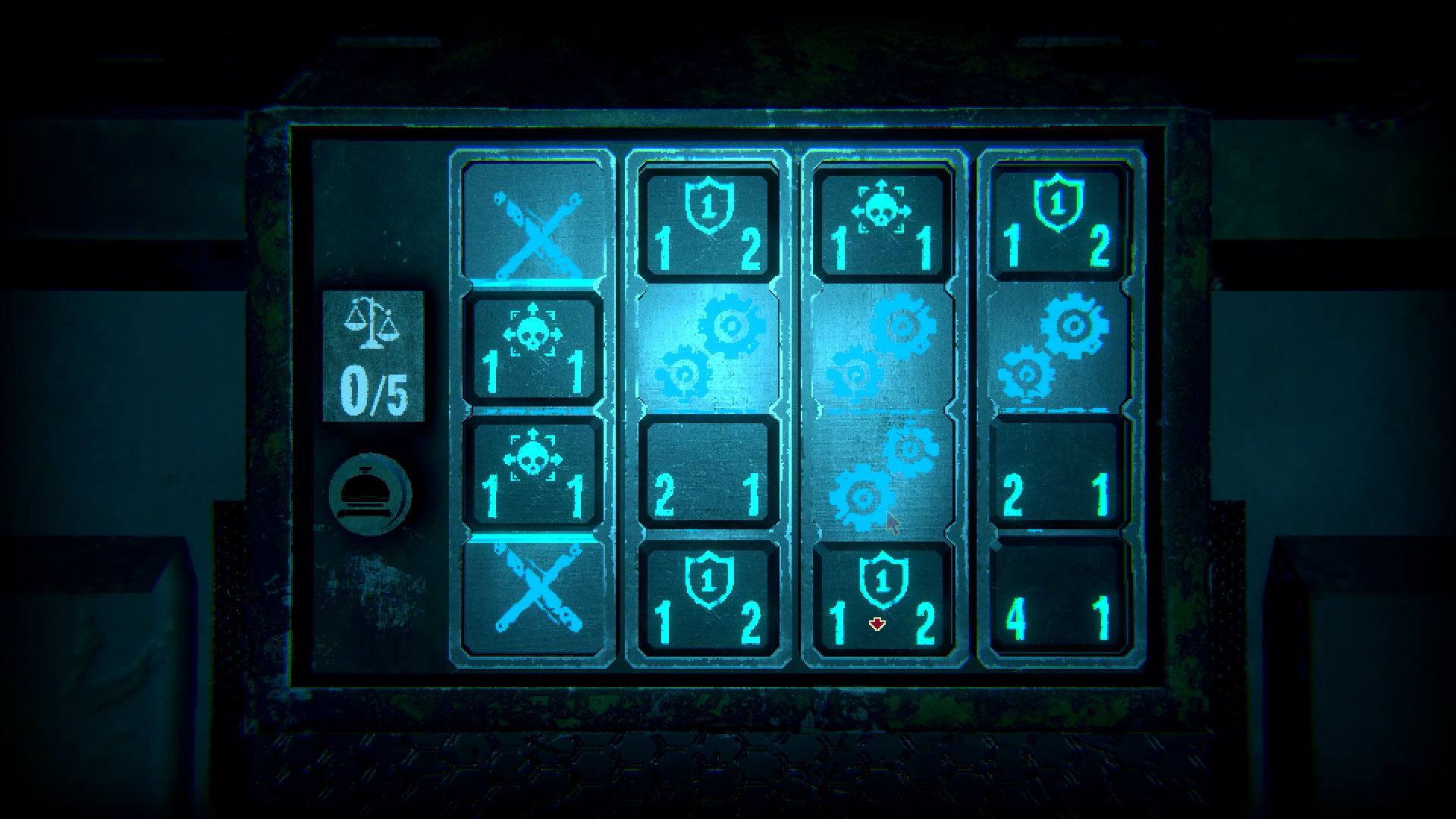
In one section I found a small knife that was suddenly added to the gaming table. What did it do? Well, it turns out that it’s a bit of a failsafe to turn the tide of a battle you may be losing. The knife gives you the ability to remove one of your eyes, and place it on the scale to tip the damage done in your favor. Don’t worry though, you’ll get it back… Sort of.
Inscryption also does a great job with setting up a fitting atmosphere. I don’t necessarily agree with it being a horror game, but it does have some elements of that genre… The low lighting, blood soaked cards, sticking a knife in your eye. Quite a bit of detail is evident in your surroundings as well.
You can almost count the individual pages of the one book that sits on the table you’re playing on. There’s also a pretty interesting twist with the graphics after you get past the first act. The change was a little jarring, and at times there were some intense screen flashes. This isn’t necessarily a negative, but something to be aware of, especially if you’ve been playing in a dark room.
In addition to the video flashes, there are also a few spots with some equally intense audio, jarring to the point where I needed to lift my headphones off my head for just a moment or so. Just be prepared to turn your headphones or volume down. There’s no voice acting here, just subtitles, music and effects.

The music and effects further build on how great the game is… The sound of cards being dealt, the increased intensity in music when facing a boss, the sound of a hook smashing down on the table and taking one of your cards. It was all done so well, I can’t nearly find the words to give it enough praise.
I love Inscryption even more because I expected something entirely different. It does everything so well, and I’m itching to get back to playing already. This deck-building psychological horror is more than worth your time, and one hell of a great game.
Inscryption was reviewed on Windows PC using a review copy provided by Devolver Digital. You can find additional information about Niche Gamer’s review/ethics policy here.